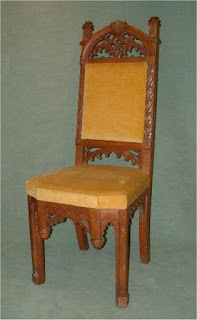In the 1830s, John became concerned about Hadrian's Wall: parts were missing. Farmers and others had been dismantling sections of the 72-mile-long structure for their own building projects for centuries. Dismayed at the loss of a piece of history, he began to buy up the land on which it stood. He promoted tourism of the Wall, he conducted excavations and restoration work, and he published archaeological studies on it.
 |
| Foundation of a "milecastle" |
There were "milecastles" every 1620 yards (the Roman mile) capable of housing 50-60 men, with towers every 1600 feet. Well, that was the plan: the placement of the milecastles can vary by up to 200 yards depending on terrain. Later, 14-16 larger forts were built along the Wall that could each house over 500 men. Additionally, a road was constructed on the south side to allow swift travel along the perimeter, and a system of berms and ditches made approach from the north more difficult.
Every article on the Wall says it was built to keep the Picts out, but while that may have been the purpose of the Wall, its function was more complex than as just a defensive work. At every milecastle was a gate, and historians accept that commerce would have passed from north to south on a daily basis. The "threat" posed to Roman Britain by tribes north of the Wall may have been exaggerated.
 |
| Broken gateway at a milecastle |
In 1987 it was declared a World Heritage Site. A National Trail footpath follows the Wall for part of its length. Just last week, a project called "Connecting Light" illuminated the Wall with 500 balloons to create a 70-mile spectacle in honor of the London 2012 culture festival.

































